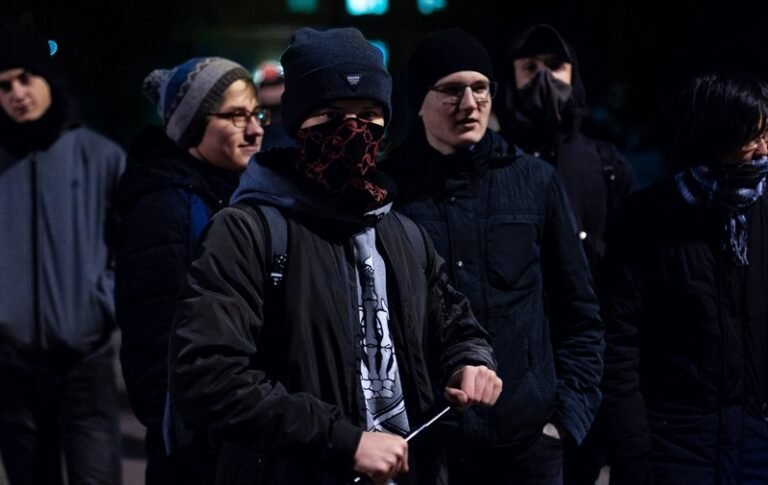Table of Contents
- Introduction
- Understanding Situational Crime Prevention Theory
- The Intersection with Gang Dynamics
- Practical Applications in Gang-Controlled Areas
- Sociological Implications
- Towards a Multifaceted Approach
- Case Studies and Real-World Illustrations
- Challenges and Critiques
- The Future of Situational Crime Prevention in Gang Contexts
- Conclusion
Introduction
Situational Crime Prevention Theory (SCP) has proven to be a highly influential framework within both criminology and sociology for reducing crime by targeting the immediate conditions that allow it to occur. Rather than focusing solely on broader social or psychological factors that motivate criminal behavior, SCP emphasizes practical measures that modify the physical or social environment in order to eliminate opportunities for wrongdoing. This environmental focus has been applied to a wide array of criminal contexts, from property theft to white-collar crimes, yet its relevance to gang-related activities remains especially compelling. By understanding how situational elements influence gang behavior, policymakers, law enforcement officials, and community stakeholders can develop proactive strategies that limit the scope and impact of gang crime. This article examines the core tenets of Situational Crime Prevention Theory, demonstrates how these principles intersect with gang activities, and explores the benefits, criticisms, and future potentials of applying SCP to real-world, gang-related contexts.
Understanding Situational Crime Prevention Theory
At its core, Situational Crime Prevention Theory seeks to reduce crime through interventions that directly influence the environments in which illegal activities may unfold. Traditional approaches to crime prevention often emphasize root causes, such as poverty, family breakdown, or systemic inequality. While these considerations are undoubtedly vital, SCP operates under the belief that situational factors themselves can significantly affect an individual’s decision to offend. By making offenses less rewarding, more risky, or more difficult, the total volume of crime can be reduced.
Key Principles
- Increasing the Effort: The theory proposes making it harder to carry out a crime. This may involve physical barriers, such as locks or security gates, or procedural barriers like mandatory identity checks.
- Increasing the Risks: When individuals sense a higher likelihood of getting caught, they may refrain from committing crimes. Enhanced lighting, surveillance cameras, or community watch programs can raise the perceived and actual risks.
- Reducing the Rewards: If the payoff diminishes, so too does the motivation to offend. For instance, limiting access to valuable goods or rapidly removing gang-related graffiti diminishes the immediate benefits gangs might otherwise gain.
- Reducing Provocations: Altering conditions that may trigger or escalate criminal behavior—such as crowding, intense social tension, or unregulated alcohol consumption—can prevent crime before it occurs.
- Removing Excuses: By clarifying norms, rules, and laws, individuals are less able to rationalize their behavior. Clear signage, codes of conduct, and explicit community norms all serve to reduce potential excuses.
Under these principles, SCP capitalizes on the notion that crime is, at least in part, a product of its surrounding environment. By adjusting local conditions and deflecting opportunities for crime, SCP aspires to reduce criminal incidents in a tangible and immediate way.
The Intersection with Gang Dynamics
Gangs are not merely collections of deviant individuals but complex social groups that derive cohesion from shared identities, values, and territorial claims. Historically, society’s response to gang violence has been a combination of suppression (intense policing, arrests, and incarceration) and, in some communities, social programs aimed at prevention or rehabilitation. These methods sometimes yield short-lived or localized success. When suppression becomes excessive, it can fracture community trust; when social programs lack adequate funding, they may not gain traction.
Situational Crime Prevention Theory offers a middle ground, suggesting practical modifications in the environments where gangs operate. Gangs thrive on territorial control, symbolic markers such as graffiti, and the capacity to conduct transactions, whether drug deals or illegal arms trades, relatively unhindered. By recalibrating these environmental dynamics—through improved surveillance, restricted access, or swift removal of territorial markers—communities can undercut a gang’s ability to flourish.
Situational Context and Gang Behavior
The territorial aspect of gang culture is among the most visible components of their power. Symbolic gestures, like tagging walls with graffiti, operate not just as vandalism but as territorial markings. Situational Crime Prevention approaches can intervene by removing or painting over such markers promptly. Although this may seem trivial, swift action in this area denies gangs the chance to visually dominate the neighborhood.
Additionally, the situational context influences group gatherings. Poorly lit alleyways, vacant lots, or abandoned buildings often become informal meeting spots for gang members because these locations permit clandestine activity. SCP-informed measures might include demolishing unsafe structures, repurposing vacant lots for community gardens, or installing extra lighting and security cameras. Such steps are not only about deterring crime; they can also transform public space into community space, thereby creating a shared environment less conducive to gang control.
Practical Applications in Gang-Controlled Areas
While the principles of SCP are broad, their application in gang-influenced communities must be both strategic and culturally sensitive. The following highlights some effective adaptations.
1. Urban Design and Territorial Management
Urban design influences social interactions, especially in densely populated or economically disadvantaged areas. By modifying the physical setting, local governments can restrict a gang’s capacity to claim and exploit territory.
- Improved Lighting and Visibility: Many crimes unfold under the cover of darkness. Enhanced street lighting, well-lit park areas, and illuminated community centers significantly increase the perceived risk for potential offenders.
- Community Revitalization Projects: Turning abandoned buildings into communal centers or local businesses fosters neighborhood pride and reduces spaces where illegal activities can flourish.
- Secure Public Spaces: Installing fencing around particular zones, establishing clear boundaries, and using architectural designs that discourage loitering can limit the congregation of gang members.
2. Surveillance Innovations
Contemporary technology has broadened the scope of surveillance beyond static cameras. Drones, mobile patrol apps, and interactive neighborhood watch platforms all amplify law enforcement capabilities.
- Closed-Circuit Television (CCTV): Although criticisms of privacy violations persist, CCTV systems placed strategically can deter gang members. Footage serves as evidence if crimes occur, increasing the real risk of apprehension.
- Mobile Patrol Apps: These applications permit real-time reporting from community members about suspicious behavior or emerging situations. Rapid information-sharing diminishes the window of opportunity for illicit activities.
- Active Social Media Monitoring: Gangs frequently use social media to communicate, recruit, and display dominance. Monitoring platforms where gang discourse occurs can uncover patterns of tension or violence before incidents erupt.
3. Policy and Legislative Measures
Governmental policies can extend the reach of SCP well beyond street corners, influencing the structural conditions under which gangs operate.
- Curfews and Loitering Bans: By limiting the hours during which certain areas are accessible, local authorities make it more challenging for gangs to congregate unnoticed. Though controversial, these measures can serve as deterrents if enacted responsibly.
- Licensing and Zoning Laws: Restricting the number of late-night venues or liquor stores in high-risk areas can lower provocations that often lead to gang violence. Zoning can also prioritize community-friendly structures like youth centers or libraries over establishments that might attract criminal elements.
- Mandatory Reporting Guidelines: Requiring businesses—such as pawn shops—to report suspicious transactions can cut off potential avenues for gangs to convert stolen goods into cash. In turn, this reduces the tangible rewards of criminal enterprise.
Sociological Implications
As a theory rooted in environmental manipulation, Situational Crime Prevention has often been praised for its pragmatic approach. However, its application in the realm of gang control raises several sociological questions and concerns.
- Displacement of Crime: A central critique is that while SCP may reduce crime in one neighborhood, it risks pushing illicit activities into adjacent areas. Without comprehensive coverage, crime can shift geographically rather than be eliminated.
- Negative Perceptions and Over-Policing: Intensifying surveillance and enacting strict regulations in areas with gang activity can lead to grievances among residents who feel constantly observed or suspect they are being profiled. This erosion of trust can be particularly acute when law enforcement agencies lack meaningful relationships with community members.
- Focus on Symptoms Over Causes: From a sociological standpoint, gangs often emerge due to deep-seated social and economic inequalities. SCP tends to focus on limiting opportunities for crime, rather than on rectifying structural injustices such as underfunded schools or racial discrimination.
- Community Agency: Situational measures are most effective when local populations buy in. Imposing them without consultation can generate hostility. Conversely, community-driven initiatives that incorporate SCP principles can foster collective efficacy, where residents feel empowered to maintain order and safety.
- Ethical Considerations: The expansion of surveillance technologies can raise ethical dilemmas about data collection, privacy, and the potential for misuse. Balancing crime prevention with civil liberties poses an ongoing challenge.
Towards a Multifaceted Approach
Get the full article AD FREE. Join now for full access to all premium articles.
View Plans & Subscribe Already a member? Log in.






